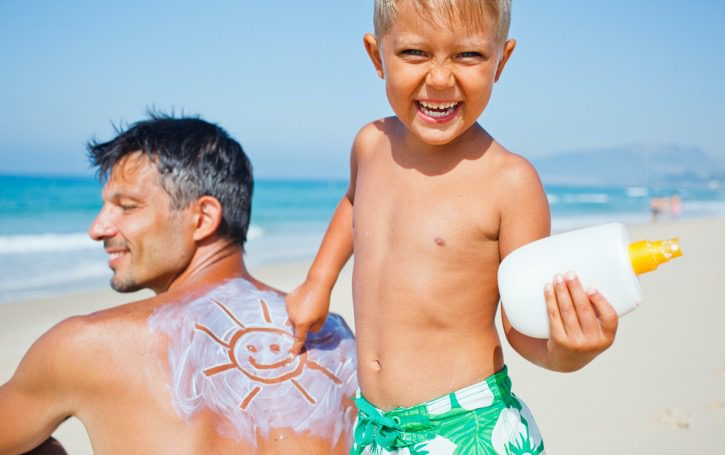Search by Color or Cause


To help reduce rising rates of skin cancer from overexposure to the ultraviolet (UV) rays of the sun, the National Council on Skin Cancer Prevention has designated the Friday before Memorial Day as Don’t Fry Day. Don’t Fry Day encourages sun safety awareness and to remind everyone to protect their skin while enjoying the outdoors.
The color orange represents non-melanoma skin cancer. Wear an orange ribbon, wristband or enamel awareness pin for non-melanoma skin cancer. Black represents melanoma. Wear a black ribbon, wristband or enamel awareness pin to call attention to melanoma.
Melanoma is the most serious form of skin cancer. It begins in cells in the skin called melanocytes (cells that produce pigment and cause your skin to tan). It is the leading cause of death from skin disease.
Other types of skin cancer are referred to as non-melanoma. The most common are basal cell and squamous cell skin cancers. These cancers make up the overwhelming majority of skin cancer cases. They usually form on the head, face, neck, hands, and arms, but can occur in other places as well.
Basal cell skin cancer grows slowly. It usually occurs on areas of the skin that have been in the sun. It is most common on the face. Basal cell cancer rarely spreads to other parts of the body.
Squamous cell skin cancer also occurs on parts of the skin that have been in the sun. But it also may be in places that are not in the sun. Squamous cell cancer sometimes spreads to lymph nodes and organs inside the body.
Other less-common forms of non-melanoma skin cancer include:
A risk factor is anything that affects a person’s chance of getting a disease such as cancer. Different cancers have different risk factors. Some risk factors, like sun exposure, can be controlled. Others, like a person’s age or family history, can’t be changed.
But risk factors don’t tell us everything. Having a risk factor, or even many risk factors, does not mean that you will get the disease. And many people who get the disease may not have had any known risk factors. Even if a person with basal or squamous cell skin cancer has a risk factor, it is often very hard to know what part that risk factor may have played in getting the cancer.
The National Council on Skin Cancer Prevention (NCSCP) urges the public to use sunscreen products as part of a comprehensive approach to prevent skin cancer. It is estimated that one in five Americans will develop skin cancer. Sunscreens are effective in reducing the risk of skin cancer as well as preventing sunburn and early signs of skin aging. The U.S. Food and Drug Administration (FDA) and others recognize the public health benefits of sunscreen and recommend its use with other sun protective measures.
Sunscreen labels should contain clear and accurate information. This information should describe the sunscreen application instructions in order to be effective. Studies show that some people who use sunscreen stay in the sun longer, thereby increasing their exposure to ultraviolet (UV) radiation, and the risk of skin cancer, including melanoma.
The bottom line is that sunscreen plays an important role in reducing skin cancer risk and preventing early signs of skin aging and sunburn. However, remember that wearing sunscreen is one of many sun-protective behaviors. Seeking shade, covering up using sun-protective clothing, and wearing a wide-brimmed hat and sunglasses are important behaviors to practice when exposed to UV rays.
Kids need sun protection too, and so do adolescents. For babies under 6 months of age, parents may apply sunscreen on small areas of skin if adequate clothing and shade are not available and sun avoidance is impossible.